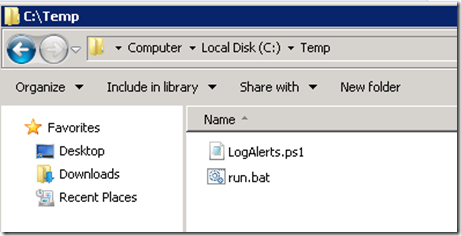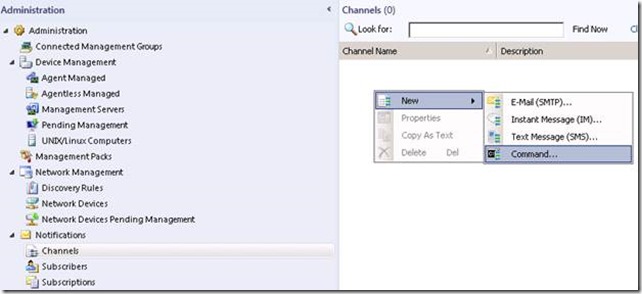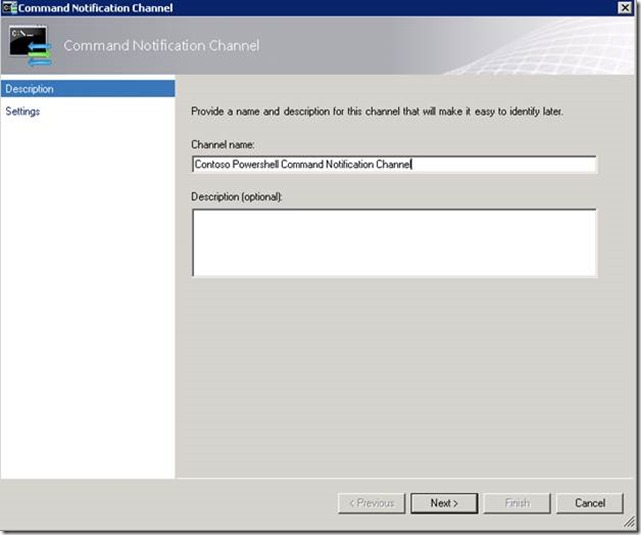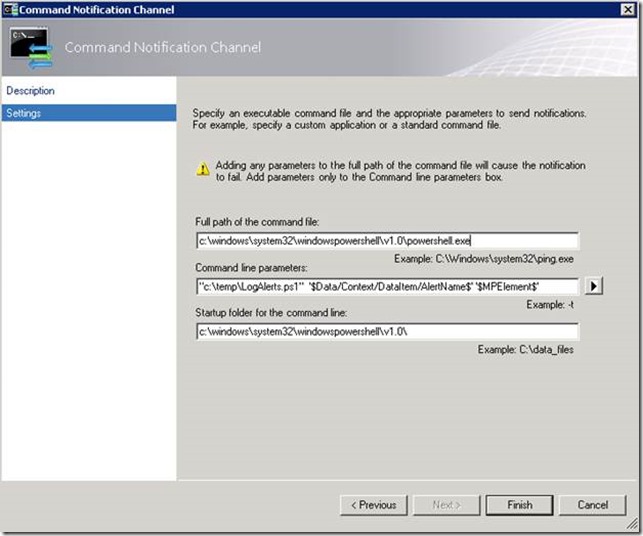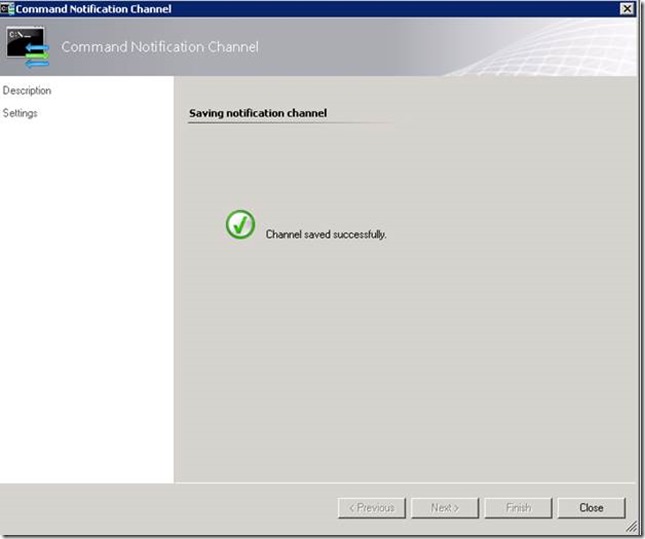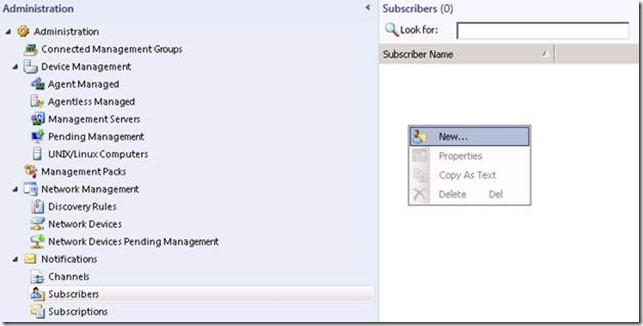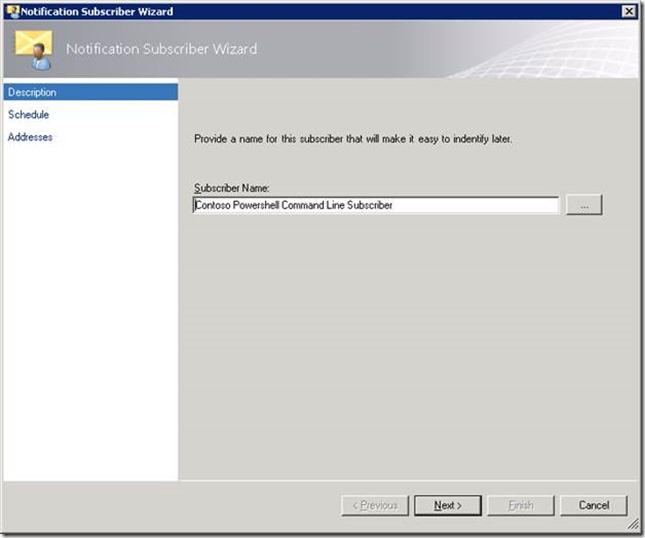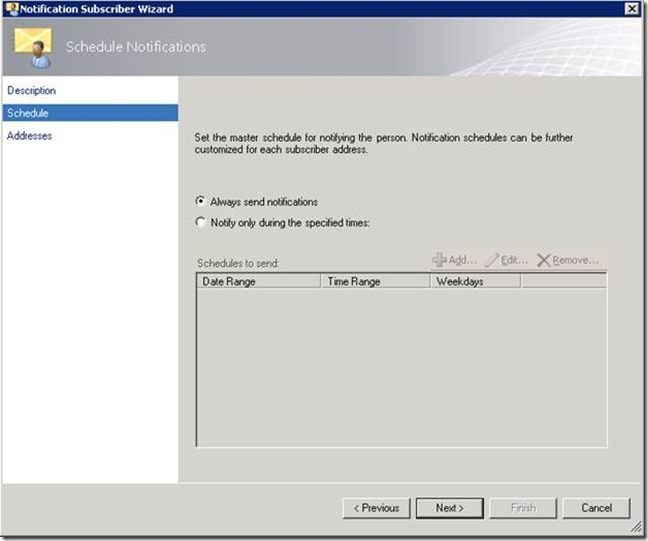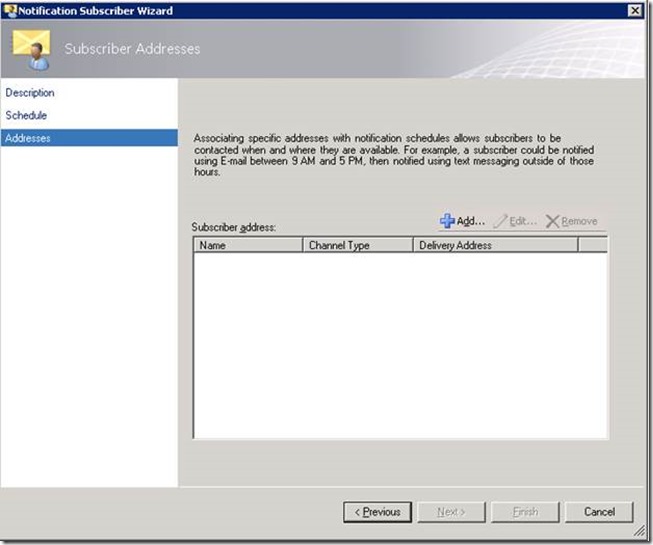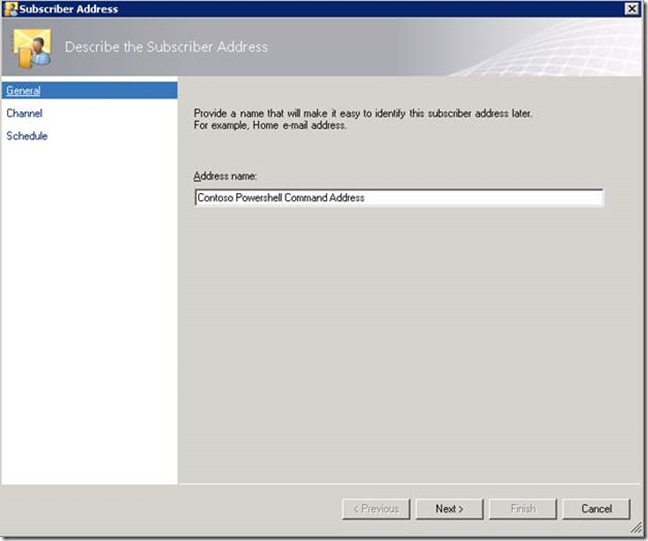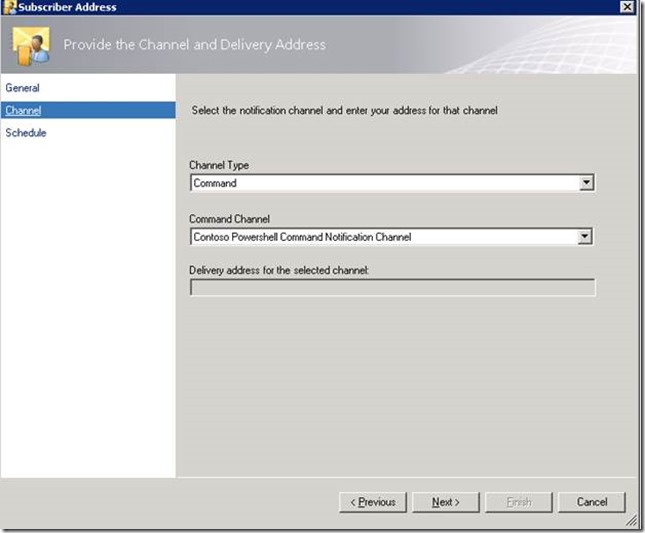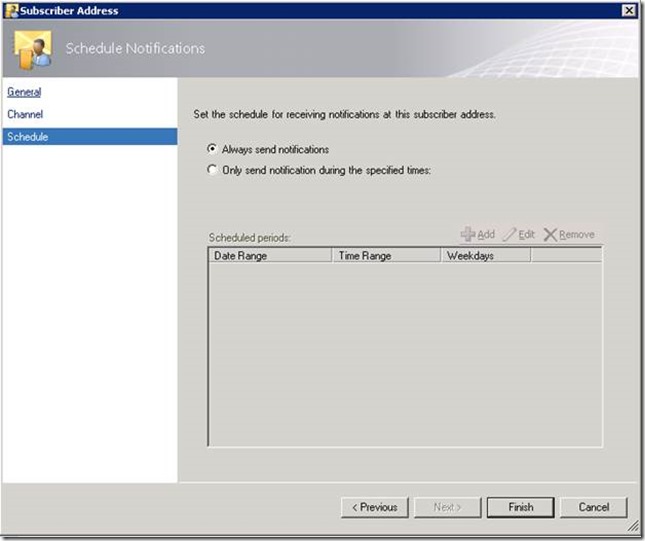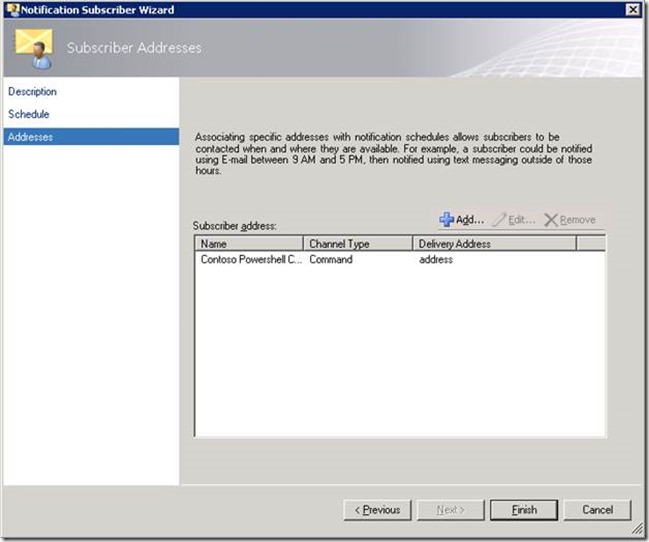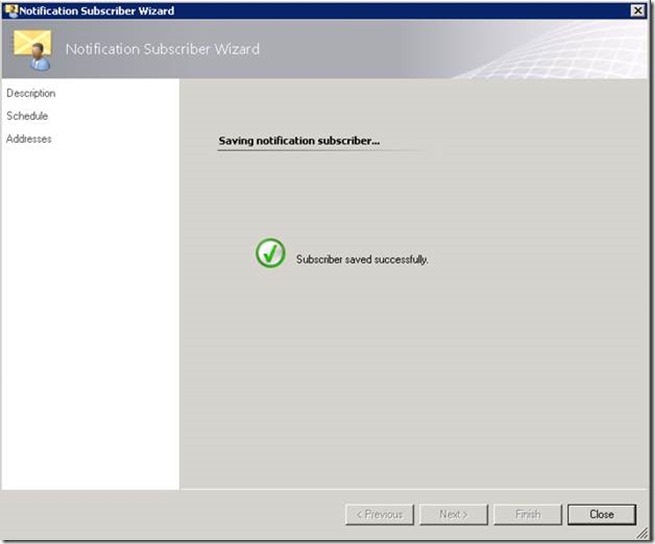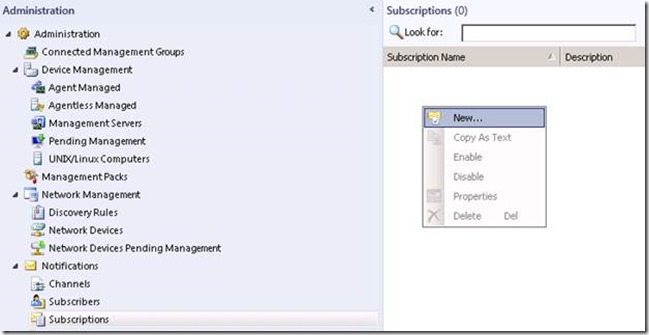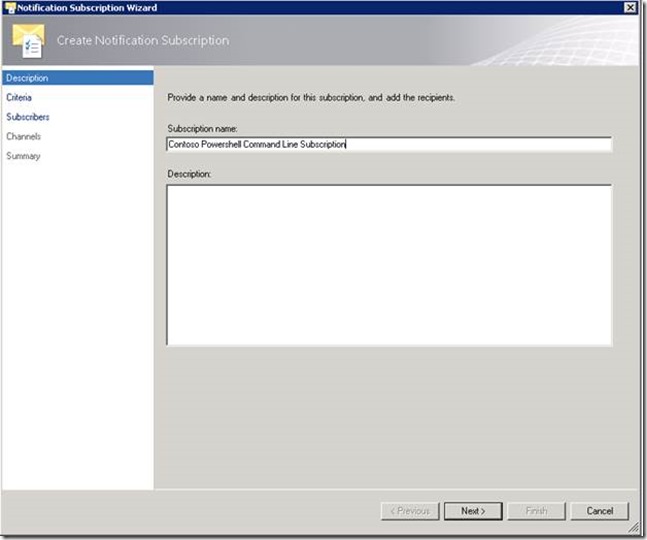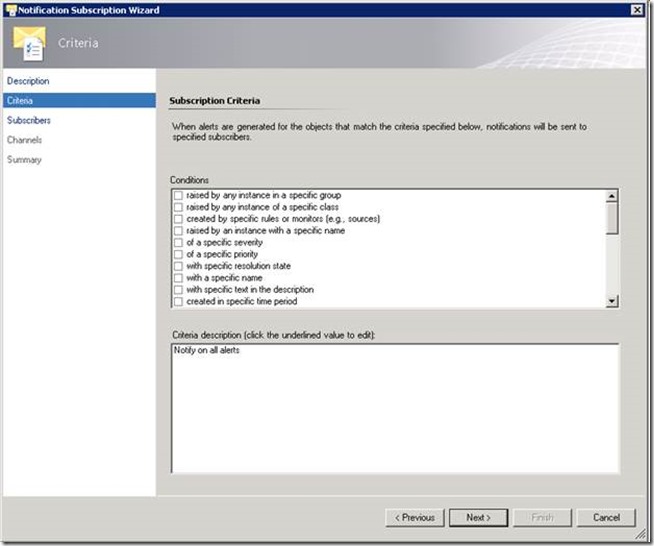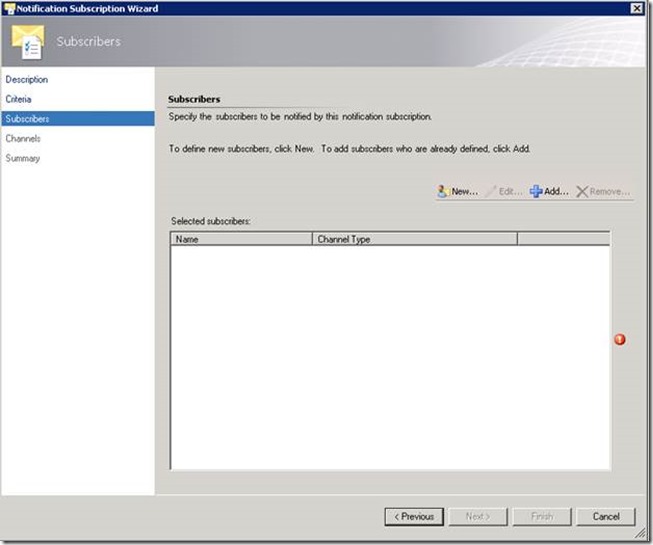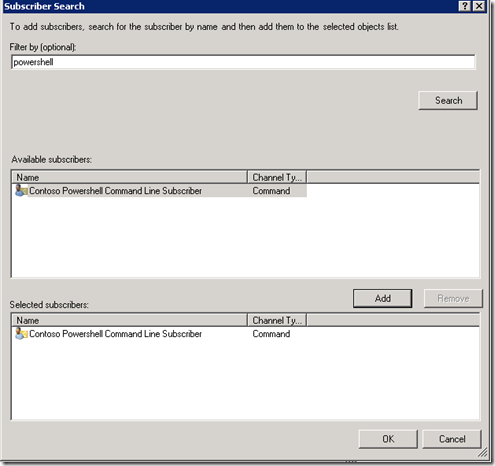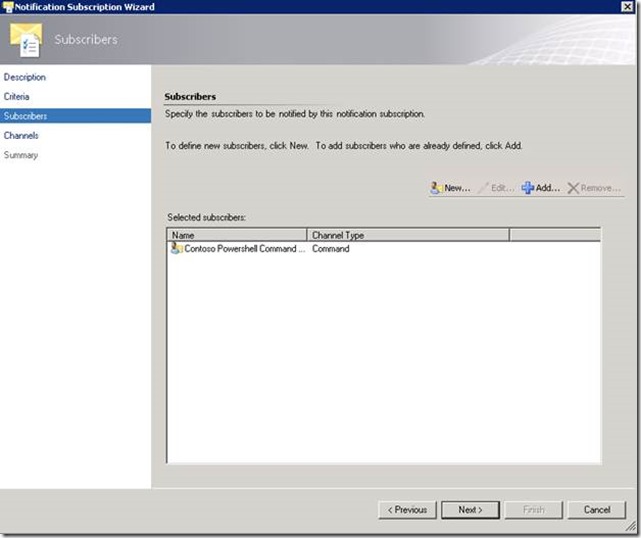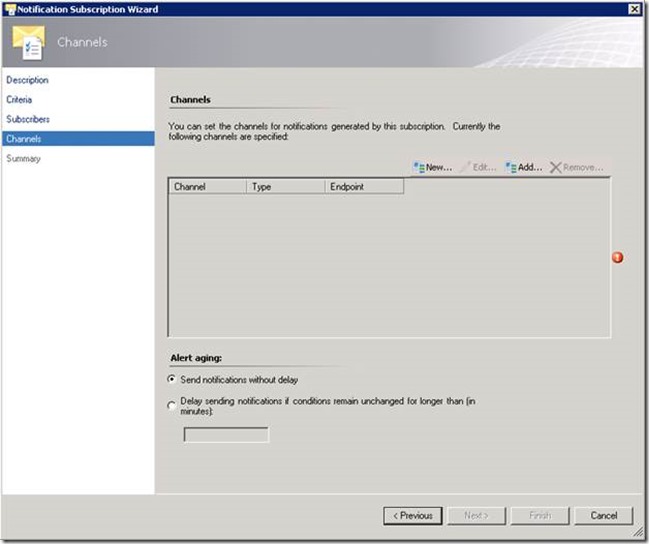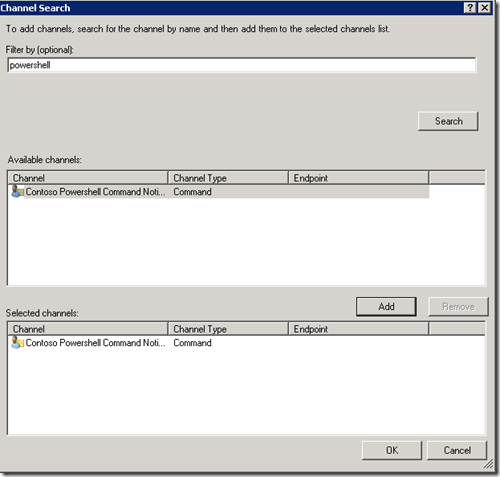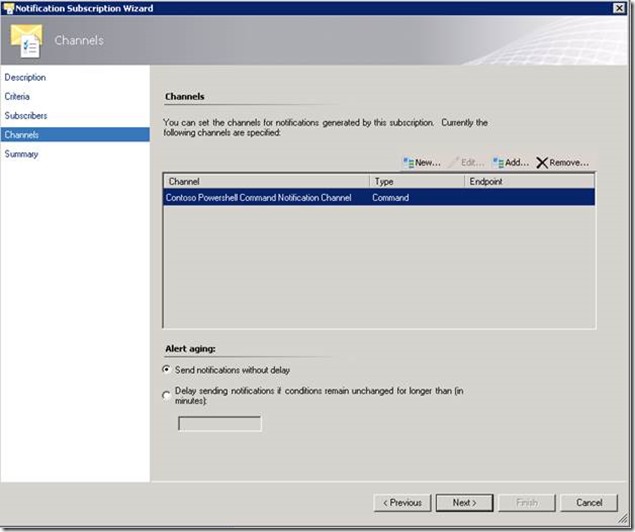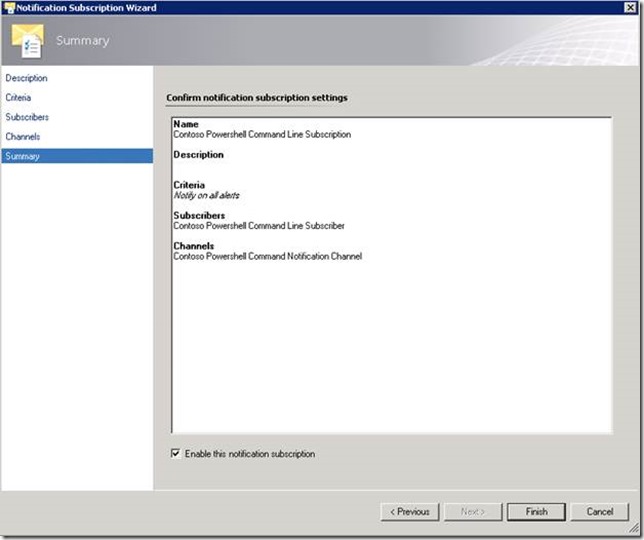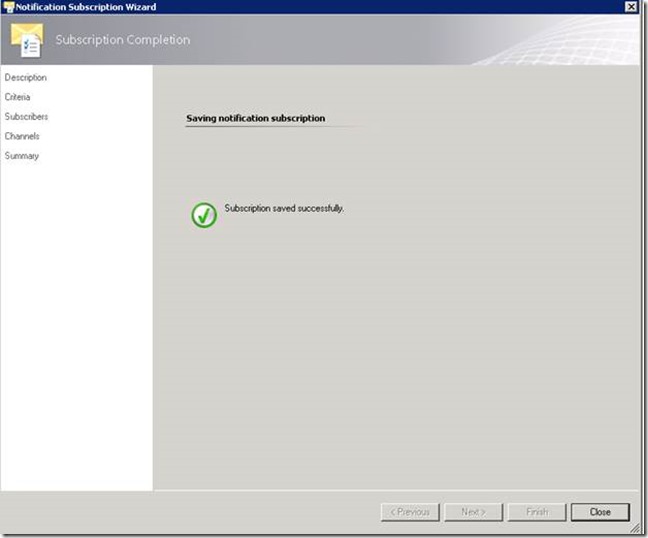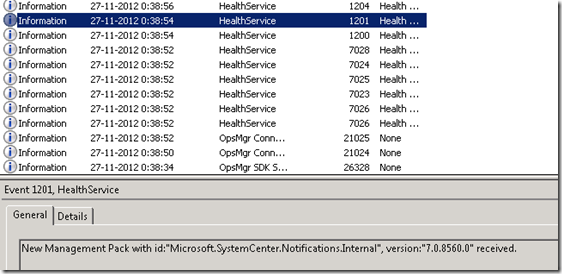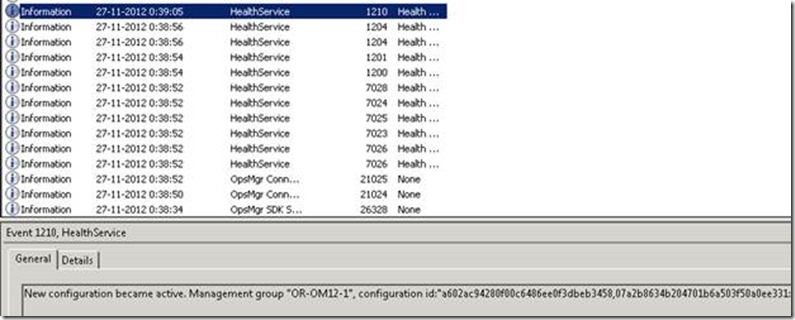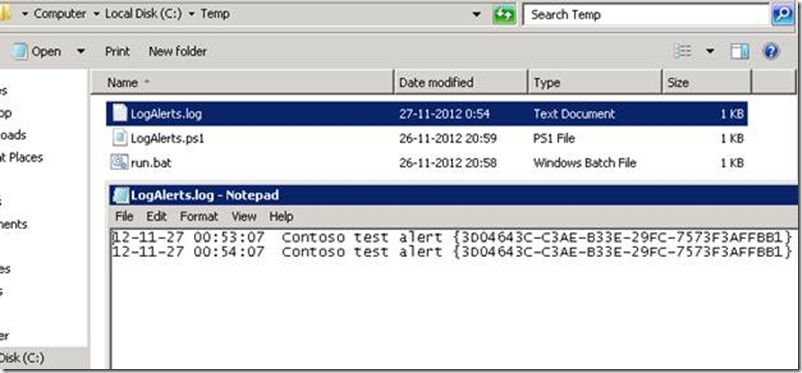How to Configure Command Notification in SCOM 2012 with PowerShell script.
Here’s a step by step tutorial how to create a Command Notification which calls a PowerShell script. The step by step is in SCOM 2012, but can also be used in SCOM 2007 R2.
Step 1 Create PowerShell script
Create the following script and test:
Param ([ String ] $AlertName ,[ String ] $SubscriptionID )
$Logstring = $AlertName + " " + $SubscriptionID
$Logfile = "c:\temp\LogAlerts.log"
$DateTime = Get-Date - Uformat "%y-%m-%d %H:%M:%S"
$Logstring = $DateTime + " " + $Logstring
Add-content $Logfile - value $Logstring
I have the script named and located here:
And you can test it with:
Step 2 Create Channel
Go to Administration -> Notifications -> Channels and create new command channel:
With the following parameters:
Channel name: Contoso PowerShell Command Notification Channel
Full path of the command file: c:\windows\system32\windowspowershell\v1.0\powershell.exe
Command line parameters: "c:\temp\LogAlerts.ps1" '$Data/Context/DataItem/AlertName$' '$MPElement$'
Startup folder for the command line: c:\windows\system32\windowspowershell\v1.0\
Save and finish:
As a result:
Step 3 Create Subscriber
In subscribers you define who or what will receive the notifications. Go to Subscribers and create a new subscriber
And add the following parameters
Subscriber name: Contoso Powershell Command Line Subscriber
Schedule: Always send notifications
In addresses click Add to add the channel you want to post the notifications
…and fill-in
Address name: Contoso Powershell Command Address
In Channel
Channel Type: Command
Command Channel: Contoso Powershell Command Notification Channel
In Schedule choose: Always send notifications
And click Finish. Now the subscriber is configured. Click Finish again:
The subscriber is send ready:
Step 4 Create Subscription
Here you configure which alerts go to which subscribers using what channel. Start here:
And add the following parameters:
Name: Contoso Powershell Command Line Subscription
Criteria: Notify on all alerts
In subscribers choose Add…
Choose the Contoso Powershell Command Line Subscriber
Click OK to add it here:
Choose the channel where you want to the notification to go to by choosing Add…
Add the PowerShell channel:
And add it by clicking OK:
Check the summary:
And if OK click Finish.
Step 5 - Check if the notification is working
Check if the notification is downloaded:
And if already active:
Create an alert (I created test alert for this):
See if the alert is raised:
If all configured well then you see here:
Additional information about command channel can be found here:
How to Enable a Command Notification Channel (SCOM 2012)
https://technet.microsoft.com/en-us/library/hh212711.aspx
Enable a command notification channel (SCOM2007)
https://technet.microsoft.com/en-us/library/dd440871.aspx
Configure Command Notification in R2
https://contoso.se/blog/?p=860
Alert notification troubleshooting in System Center Operations Manager 2007
https://blogs.technet.com/b/operationsmgr/archive/2010/08/11/alert-notification-troubleshooting-in-system-center-operations-manager-2007.aspx
Account for Command Channel when using Notification in OpsMgr 2007 R2
https://blog.coretech.dk/kra/account-for-command-channel-when-using-notification-in-opsmgr-2007-r2/
Author: Dirk van Coeverden
Comments
- Anonymous
January 01, 2003
Hi Fesiro, Thanks for the article. It is very helpful. I am a newbie to SvcMgr and OpsMgr and I am trying to do the following and would appreciate any help. The following is what I am trying to do:
- Monitor Servers using SCOM
- When one of the monitored server's HDD has a pre-determined amount of disk space left or a service that has stopped, raise an alert in SCOM.
- With that alert, raise an incident in SvcMgr.
- Using Orchestrator, remediate the issue and change the alert status in SvcMgr. I believe the following is the approach I need to achieve this:
- SCOM monitors the servers and raises the alerts
- Using the diagnostic and recovery task in SCOM, the service gets restarted / the file gets deleted the PS produces the customised resolution state of that alert
- Modify the incidence list is SM that whenever that particular type of incidence comes in to from SCOM, it gets marked in a particular way
- Once the specific incidence is created in SM, the orchestrator runbook is triggered and it goes and marks it as resolved. I have a question to ask in regards to this. I believe I can create a command channel to change the nature of the alert in SCOM. Say for example I want to rename all critical alerts coming from a particular server for disk space/service stopping, I want to change all critical alerts to say "Assign to SvcMgr". Is there a way I can achieve that? I am really a newbie and have not got a lot of experience with powershell. Would you be able to direct me towards anything similar? Any help will be greatly appreciated. Thanks in advance.
Anonymous
January 01, 2003
Hi - thanks for that - perfectly described how to do it!Anonymous
January 01, 2003
Hi Fesiro I also forgot to mention that I have created a custom alert state in SCOM in Administration-->Alerts-->New with an ID of 19. Ideally I would want to convert all the new alerts of the type that I want into alerts of this type.Anonymous
May 08, 2013
Dirk: Can we add additional fields of information to the log? Like, Resolution State? Recipients who have received this notification? That would make this very valuable as an auditing point. Where and How can we add additional fields? I am at a loss as to how SCOM 2012 pulls SMTP outgoing mail for notifications and there is now internal log (within SCOM) to verify who has received notifications. Thanks in advance.Anonymous
June 17, 2013
The comment has been removedAnonymous
July 22, 2013
I have been trying to raise notification via Command channel using powershell script in SCOM 2012 we currently have this working in SCOM2007 at the moment a simple script get-date >> C:TempSimpleTest.txt will run interactively on my servers but once I feed it in to command notification channel fails with not trace in the logs I see the script launch by Opsmgr but not complete , nor record of its failure ?Anonymous
August 07, 2013
be carefull you are unable to run any scruipt until you enable them in powershell. try this: Set-ExecutionPolicy remotesignedAnonymous
March 17, 2014
Do you perhaps have a script to send out sms's with a modem?
